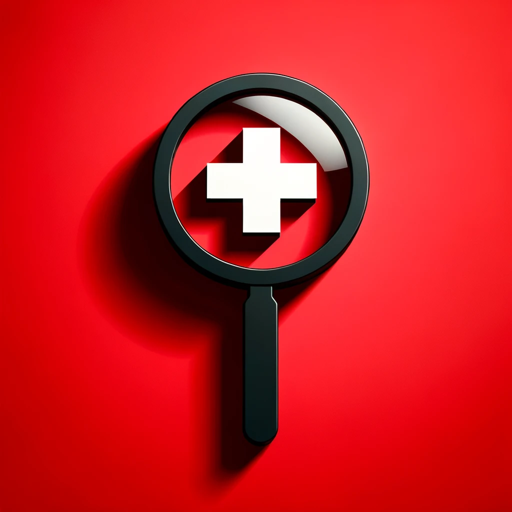Scrubs - Medical Scrub Insights
Welcome! Ask me anything about medical scrubs.
Empowering Healthcare Professionals with AI-Driven Scrub Insights
Tell me about the history of medical scrubs.
What are the different styles of scrubs?
How do scrub colors vary in different hospitals?
Why are scrubs used in healthcare settings?
Get Embed Code
Overview of Medical Scrubs
Medical scrubs are specialized clothing worn by healthcare professionals primarily in hospitals, clinics, and other medical facilities. Designed for cleanliness, functionality, and easy identification, scrubs consist of a short-sleeved top and pants, typically made from durable, lightweight, and often fluid-resistant materials. These garments are designed to be simple yet effective in maintaining hygiene in a healthcare setting, with minimal places for contaminants to hide. Scrubs can vary in color and style, reflecting the wearer's role, department, or personal preference. For instance, pediatric scrubs might feature child-friendly patterns, while surgical scrubs are often in a sterile blue or green to reduce eye strain in brightly lit operating rooms. Powered by ChatGPT-4o。

Functions and Applications of Medical Scrubs
Hygiene and Safety
Example
Surgical scrubs are used in operating rooms to maintain a sterile environment. They are often made from antimicrobial fabrics to reduce the risk of infection.
Scenario
In a surgical procedure, the team wears sterilized scrubs to prevent bacteria from contaminating the surgical site.
Identification and Organization
Example
Different departments within a hospital may use distinct colors of scrubs for easy identification, such as navy blue for nurses and light blue for respiratory therapists.
Scenario
In a busy hospital setting, color-coded scrubs help staff and patients quickly identify the roles of different healthcare professionals, facilitating communication and efficiency.
Comfort and Functionality
Example
Scrubs designed with multiple pockets and durable fabrics allow healthcare workers to carry essential tools while providing care, offering both comfort and practicality throughout long shifts.
Scenario
A nurse working a 12-hour shift values scrubs with breathable fabric and multiple pockets for carrying medical instruments, personal items, and documentation.
Target Users of Medical Scrubs
Healthcare Professionals
Doctors, nurses, surgical technicians, and other medical staff are the primary users of scrubs. These garments offer them the necessary functionality, comfort, and protection required for their demanding roles.
Medical Students
Students undergoing clinical rotations or practical training benefit from wearing scrubs, as they provide a professional appearance, signify their role, and protect against contaminants.
Veterinary Staff
Veterinarians and veterinary technicians also wear scrubs, given the similar requirements for hygiene, functionality, and ease of movement in caring for animals.
Dental Professionals
Dentists and dental hygienists wear scrubs for the same reasons as medical healthcare workers, ensuring cleanliness and professional appearance while treating patients.

Using Scrubs: A Step-by-Step Guide
1
Start by accessing a comprehensive AI experience at yeschat.ai, offering a free trial without the need for login or subscription to ChatGPT Plus.
2
Explore the variety of scrubs styles, colors, and materials available to understand which best suits your professional requirements and personal preferences.
3
Consider the specific needs of your healthcare environment—whether it's for a hospital, dental office, or veterinary practice—to select the appropriate scrubs.
4
Utilize the insights on fabric care and maintenance provided to prolong the life of your scrubs and maintain a professional appearance.
5
Engage with community features or customer support for personalized advice on the best practices for selecting and using medical scrubs effectively.
Try other advanced and practical GPTs
Blood Pressure
Empowering Heart Health with AI

Emergency Medical Technician (EMT)
Empowering emergency care with AI

Medical Malpractice Watchdog
Navigating Medical Malpractice with AI Precision

Medical Devices
Empowering healthcare with AI technology

Dr. BajaWell Hypertension
Empowering Healthier Lives with AI

Summarizer Pro
AI-powered, personalized content summarization

EMT (Emergency Medical Technician)
Empowering EMS Knowledge with AI

Bible Parables | What's the message?
Visualize and Understand Biblical Parables with AI

Brand Stigma Marketing Strategist
Navigating Brands Beyond Stigma with AI

LoveLetters💌
Crafting Your Words of Love, AI-Powered

Artikel Writer GPT
Empower Your SEO with AI

Voice-to-Clean Text Pro [GPT 4.5 Unofficial]
Transforming Speech into Polished Text
![Voice-to-Clean Text Pro [GPT 4.5 Unofficial]](https://r2.erweima.ai/i/FLsZ7zo_S66Rie0wzEBntA.png)
Frequently Asked Questions About Scrubs
What are the different types of medical scrubs?
Medical scrubs come in various types, including standard unisex sets, fitted styles for women and men, scrubs with antimicrobial properties, and those designed for specific specialties such as pediatrics with themed prints.
How do I choose the right size scrubs?
To choose the right size scrubs, measure your chest, waist, and hips. Consult the sizing chart provided by the manufacturer, as sizes can vary. Consider the fit you prefer, whether it's classic, relaxed, or form-fitting.
Can scrubs be personalized?
Yes, scrubs can be personalized with embroidery or printing services offered by many suppliers. Personalization can include names, titles, department logos, or custom designs.
What is the significance of scrub colors?
Scrub colors can signify different roles or departments within a healthcare facility, such as blue for nurses and green for surgeons. Some institutions have specific color codes to facilitate identification and unity.
How should scrubs be cared for?
Care for scrubs by washing them in cold water with similar colors and using mild detergent. Tumble dry on low heat. Avoid using bleach to preserve the fabric's integrity and color. Ironing is rarely necessary if hung immediately after drying.
